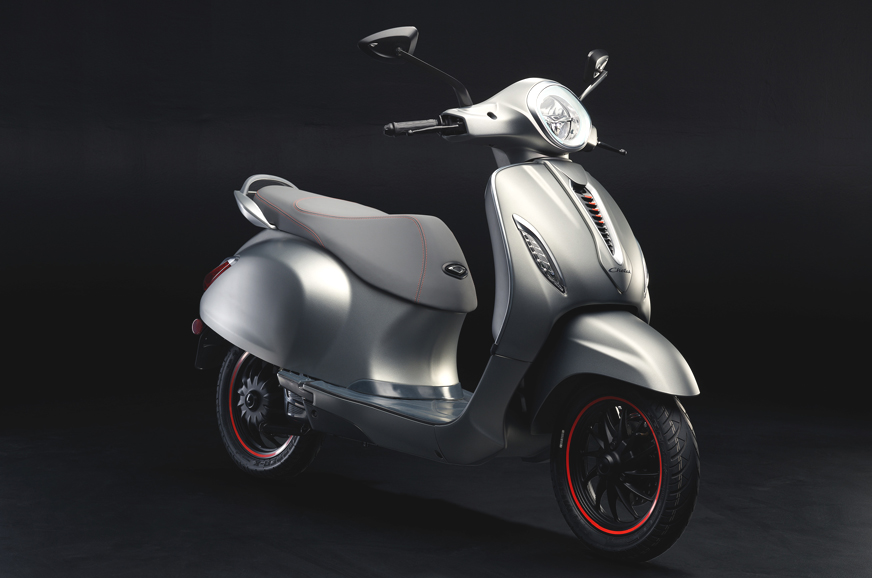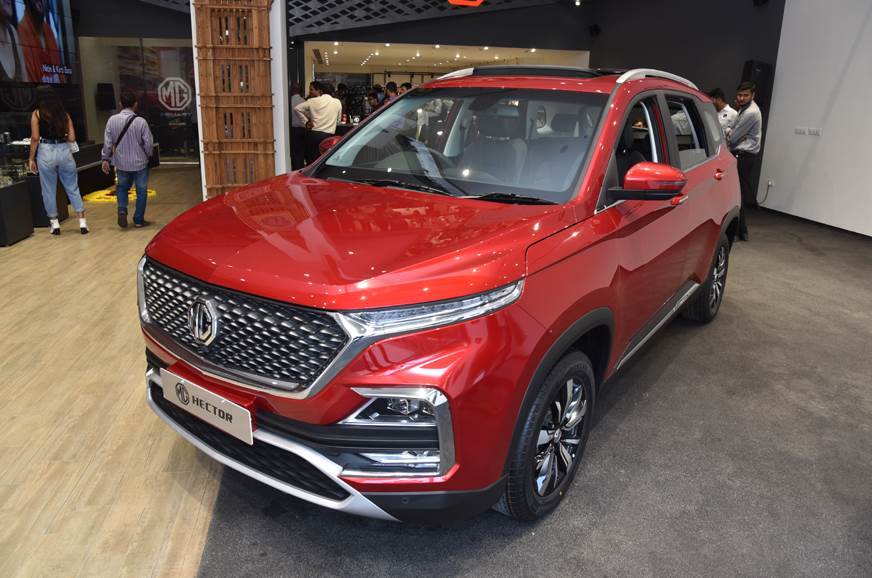
Bajaj recently revealed its contender in the growing electric two-wheeler segment in India. It’s called the Chetak and is the first product from the company’s new Urbanite business vertical. While we are still awaiting the electric scooter’s price tag and some technical specifications, we do already know quite a bit about the Chetak. Here’s a list of the five most important things to know about the 2020 Bajaj Chetak.
Retro styling
It doesn't take more than a glance to realise that Bajaj has taken the retro-styling route with their new electric scooter. While the design fits the retro Chetak nameplate, Bajaj missed an opportunity to debut a completely new styling direction, to match its electric underpinnings. That’s not saying that the Chetak doesn’t look appealing, far from it actually - it is quite pretty. The curvy bodywork, multi-spoke wheels and contoured seat work in harmony to create what looks like a timeless design. That said, just as the original Chetak was based off the Vespa Sprint, the new age Chetak echoes modern era Vespas, even though this one has nothing to do with the Italian brand.
However, it’s not only Bajaj that has gone down the retro route in recent times: the Yamaha Fascino, Suzuki Access 125 and Hero Pleasure Plus 110 have retro-inspired themes well.
Quality is a priority
The Chetak will be positioned as a premium product and extra attention has been paid to smaller details like the ‘feather touch’ switchgear, full-LED lighting, digital console and high quality of materials used in areas like the mirror stalks, side stand and flush-fitting pillion foot pegs. The Chetak will also become one of the few scooters in India to be offered with a metal body. What we were also impressed by is the contrast stitching on the seats and the lack of visible joints on the body panels - the entire rear looks like one single unit. This might increase the manufacturing cost slightly, but it does give the scooter a high-end appearance.
Realistic range and performance
The Chetak will use a 4kW electric motor and an IP67-rated lithium-ion battery pack that’s not removable. The e-scooter also has two riding modes – Eco and Sport – and it will have a reverse assist feature as well. Exact battery specifications have not been revealed, but range is quoted at 85km and 95km in Sport and Eco modes, respectively. Bajaj points out that these figures were achieved through real-world testing within Pune city and that the ARAI test figures will be much higher.
The scooter has an in-built charger and the vehicle can be charged by plugging into a regular 5-ampere home power outlet. There will be no DC fast charging feature (Bajaj says the range is adequate enough to not require this feature) and a full charge will take around five hours. Bajaj says they will also sell a home-charging station at a ‘nominal cost’ and this charger will also show the amount of energy consumed during charging.
Unique transmission
Bajaj appears to have taken a unique route of using a swingarm-mounted motor that sends power to the rear wheel via a 'high-efficiency automated gearbox'. Again, Bajaj has not revealed any information on how this works, but the scooter's digital display shows a neutral light as well as what appears to be five notches – which may be for the five gears. We expect the whole system to be automated, but the riding experience is bound to be quite unique. We’re looking forward to experiencing this.
Price and availability
According to the company, the attractive aspect of the price will be possible because they have achieved the level of localisation required for it; this, however, doesn’t provide too much clarity on the price. There are some costs saving measures like the use of a rear drum brake and a simple digital display rather than a TFT unit, that lead us to believe the Chetak certainly won't cost Rs 1.5 lakh. The scooter also qualifies for the FAME II subsidy. However, whether it will be priced at around the Rs 1 lakh mark, under, or over it is the bigger question. For reference, the Ather 450, which will be the Chetak’s closest rival, is priced at Rs 1.13 lakh (on-road, Bengaluru). To read all of our thoughts on the pricing, head here.
The company will stick to its existing network to retail the Chetak e-scooter. It will also be launched in a phased manner - it will first be available in Pune in January 2020, and then in Bengaluru shortly after. Plans to launch in other cities will be made as per market response.
from Autocar India https://ift.tt/31vQIjc
via IFTTT

No comments:
Post a Comment